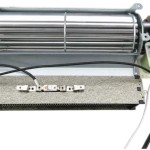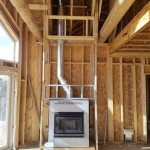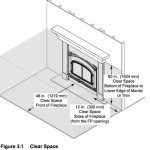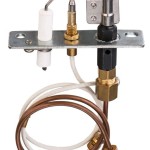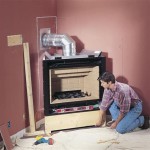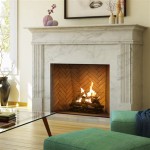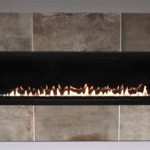Modern Gas Fireplaces Without Chimneys: A Comprehensive Guide
The allure of a crackling fireplace has always held a special place in our hearts. But traditional fireplaces, with their reliance on chimneys, can be a significant investment and require regular maintenance. Today, thanks to innovative technologies, you can enjoy the warmth and ambiance of a fireplace without the hassle of a chimney. Modern gas fireplaces without chimneys offer a stylish and efficient way to bring a cozy fireplace experience to your home.
Types of Ventless Gas Fireplaces
Ventless gas fireplaces, also known as "vent-free" or "direct-vent" fireplaces, are designed to operate without a traditional chimney. They utilize a sealed combustion system that safely vents exhaust gases directly outside the home, usually through a small vent pipe installed in a wall or ceiling. Here are the two main types:
1. Direct Vent Fireplaces
Direct vent fireplaces use a sealed combustion system that draws fresh air from outside the home and expels exhaust gases directly outside. They require a vent pipe that connects the fireplace to the exterior wall. The vent pipe typically runs vertically up through the wall and exits outside, allowing for a more efficient and eco-friendly operation. They offer a greater level of safety, as they do not rely on the home's existing airflow for combustion and exhaust.
2. Ventless Fireplaces
Ventless fireplaces, sometimes referred to as "sealed combustion" fireplaces, are designed to operate without any venting to the exterior. They use a closed system that burns gas within a sealed chamber and releases combustion gases back into the room after they have been treated and filtered to reduce harmful emissions. Ventless fireplaces are generally smaller and more portable than direct vent fireplaces, making them a convenient option for smaller spaces. However, due to their reliance on room air for combustion, their use is subject to regulations and limitations.
Advantages & Disadvantages of Modern Gas Fireplaces Without Chimneys
Modern gas fireplaces without chimneys offer several advantages over traditional fireplaces. Let's explore both sides of the coin:
Advantages
Here are some of the key benefits of opting for a modern gas fireplace without a chimney:
-
Cost-Effective:
Chimneyless fireplaces are typically more affordable to install than traditional fireplaces, as they eliminate the need for expensive chimney construction, repairs, and maintenance. -
Convenience:
They are significantly easier to install and maintain than traditional fireplaces. -
Safety:
Modern gas fireplaces without chimneys feature advanced safety features, such as automated shut-off valves and oxygen depletion sensors, which help prevent accidents. -
Efficiency:
The sealed combustion systems of these fireplaces greatly reduce heat loss and energy consumption, making them more efficient than their traditional counterparts. -
Versatility:
They come in a wide range of styles and sizes to match any decor, and can be installed in various locations within the home.
Disadvantages
While modern gas fireplaces without chimneys offer many advantages, it's essential to consider their potential drawbacks:
-
Air Quality:
Some concern surrounds the use of ventless fireplaces due to their release of combustion byproducts into the room's air. However, advancements in technology have resulted in significantly reduced emissions in modern models. -
Regulations:
Local regulations and building codes may apply to ventless fireplace installation and usage. -
Space Requirements:
While smaller than traditional fireplaces, they still require adequate space for installation and operation.
Important Considerations
To ensure a safe and efficient installation, proper operation, and long-term enjoyment of your modern gas fireplace without a chimney, some important considerations include:
1. Ventilation
Ensure adequate ventilation in the room where the fireplace is installed. Ventless fireplaces require sufficient airflow to safely exhaust combustion byproducts. Consult with a qualified installer to ensure proper ventilation is in place.
2. Installation
Proper installation is crucial for both safety and efficiency. Seek out a certified gas fireplace installer to ensure the fireplace is correctly positioned, vented, and connected to the gas line.
3. Maintenance
Regular maintenance is essential for prolonging the lifespan of your fireplace and ensuring optimal performance. This includes checking the gas lines for leaks, cleaning burner units, and inspecting the exhaust vent for obstructions.
Modern gas fireplaces without chimneys offer a practical and aesthetically pleasing way to enhance the ambiance of your home. With careful consideration and adherence to best practices, they can provide years of enjoyment and warmth without the hassle of a traditional chimney. Remember to always prioritize safety and follow the manufacturer's instructions and local regulations for installation and maintenance.

No Chimney Problem Blog

5 Types Of Fireplaces For Apartments Homes Without Chimneys Modern Blaze

How To Vent A Gas Fireplace Without Chimney Vertical Care

5 Of The Best Gas Fires For Homes Without A Chimney Or Flue Flames Co

No Space For A Designer Gas Fire Problem Stovax Gazco

Balanced Flue Gas Fires No Chimney
:max_bytes(150000):strip_icc()/ventless-gas-fireplaces-4160746-hero-f9d4bdcd9bd446eb84406de306f790ba.jpg?strip=all)
How To Pick Out A Ventless Gas Fireplace

Do You Need A Chimney For Fireplace Direct Fireplaces

Balanced Flue Gas Fires No Chimney

Traditional Contemporary Open Hearth Fireplaces Surrey Wakeford
Related Posts

